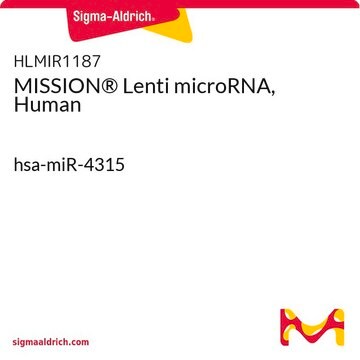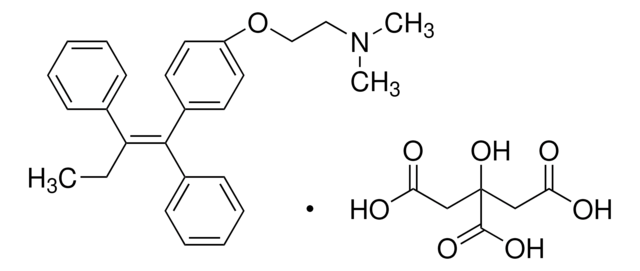Kluczowe dokumenty
H7904
(Z)-4-Hydroxytamoxifen
≥98% (HPLC), powder, estrogen receptor modulator
Synonim(y):
4OH-Tamoxifen, (Z)-4-(1-[4-(Dimethylaminoethoxy)phenyl]-2-phenyl-1-butenyl)phenol, (Z)-4-OHT, trans-4-Hydroxytamoxifen
About This Item
Polecane produkty
Nazwa produktu
(Z)-4-Hydroxytamoxifen, ≥98% Z isomer
Poziom jakości
Próba
≥98% (HPLC)
Formularz
powder
warunki przechowywania
desiccated
protect from light
rozpuszczalność
methanol: 10 mg/mL
ethanol: 20 mg/mL (with heating)
spektrum działania antybiotyku
neoplastics
Tryb działania
enzyme | inhibits
inicjator
AstraZeneca
temp. przechowywania
2-8°C
ciąg SMILES
CC\C(c1ccccc1)=C(/c2ccc(O)cc2)c3ccc(OCCN(C)C)cc3
InChI
1S/C26H29NO2/c1-4-25(20-8-6-5-7-9-20)26(21-10-14-23(28)15-11-21)22-12-16-24(17-13-22)29-19-18-27(2)3/h5-17,28H,4,18-19H2,1-3H3/b26-25-
Klucz InChI
TXUZVZSFRXZGTL-QPLCGJKRSA-N
informacje o genach
human ... ESR1(2099) , ESR2(2100) , ESRRG(2104) , IL6(3569)
rat ... Ar(24208) , Esr1(24890) , Esr2(25149)
Opis ogólny
Zastosowanie
- as a media supplement to study the cell viability by WST-1 Assay
- for inducing deletion of transforming growth factor-β (TGF-β gene in mice
- to induce Cre recombinase activity in vitro.
Cechy i korzyści
Hasło ostrzegawcze
Danger
Zwroty wskazujące rodzaj zagrożenia
Zwroty wskazujące środki ostrożności
Klasyfikacja zagrożeń
Acute Tox. 4 Oral - Aquatic Acute 1 - Aquatic Chronic 1 - Carc. 1B - Repr. 1B
Kod klasy składowania
6.1C - Combustible acute toxic Cat.3 / toxic compounds or compounds which causing chronic effects
Klasa zagrożenia wodnego (WGK)
WGK 3
Temperatura zapłonu (°F)
Not applicable
Temperatura zapłonu (°C)
Not applicable
Środki ochrony indywidualnej
Eyeshields, Gloves, type P3 (EN 143) respirator cartridges
Wybierz jedną z najnowszych wersji:
Masz już ten produkt?
Dokumenty związane z niedawno zakupionymi produktami zostały zamieszczone w Bibliotece dokumentów.
Klienci oglądali również te produkty
Produkty
Small Molecule CRISPR Enhancers
Nasz zespół naukowców ma doświadczenie we wszystkich obszarach badań, w tym w naukach przyrodniczych, materiałoznawstwie, syntezie chemicznej, chromatografii, analityce i wielu innych dziedzinach.
Skontaktuj się z zespołem ds. pomocy technicznej








